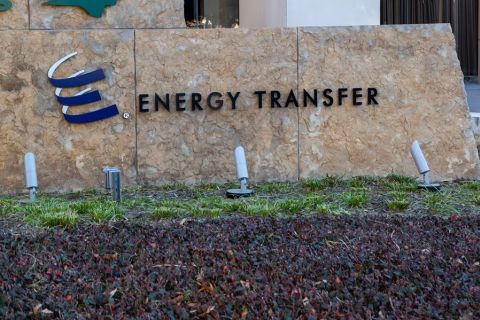The expansion of unconventional oil and gas development has placed a new emphasis on better understanding of well performance. Expenditure on horizontal and/or stimulated wells is higher than conventional wells of the past and requires reservoir professionals to look to new technologies to ensure optimal return on drilling, completion, and stimulation monies spent.
Historically, the analysis of hydraulic stimulation effectiveness has been based on fracture modeling to evaluate the effects of rate, volume, and proppant on fracture geometry and conductivity as well as petrophysical analysis to evaluate reservoir characteristics. Radioactive-based proppant and water tracers have been used in many wells, evolving more recently into water-based chemical tracers to determine spent fluid (water), relative flowback (cleanout), and radioactive or neutron-absorbing prop-pant tags to verify the position of proppant placement.
Hydrocarbon-soluble chemical tracer tagging

FIGURE 1. Tracer production logs like this one from the Eagle Ford will help operators refine the design of future wells to optimize production. (Images courtesy of Tracerco)
One of the newest technologies to emerge, providing information on native oil and gas flow from each hydraulically stimulated stage of unconventional wells, involves the use of hydrocarbon-soluble chemical tracer tagging. The key to this technology is the use of specialist tracers that are manufactured in the form of emulsions. These are added to the aqueous-based stimulation fluid of each fracture stage. The tracer is applied with the proppant and transported deep into the fracture matrix via the fracture gel. The selected specialized tracers are hydrophobic but have a very strong affinity for either hydrocarbon liquid or gas. Wherever the fracture gel makes contact with hydrocarbon in the fractures, the tracer will move across from the aqueous phase into the in situ hydrocarbon.
At the onset of well production, if hydrocarbons are able to move from each stage, this will transport the specific tracer placed in the stage through the fracture matrix into the main wellbore and up to the surface. Samples of the produced oil or gas are collected from the wellhead and analyzed for the presence and concentration of each tracer over time. A comparative analysis of the amount of tracer from each stage in a particular sample can then be related to the amount of hydrocarbons producing from a stage, with more hydrocarbons resulting in increased tracer displacement from a stage.
Sampling of returned water is not necessary since the tracers are exclusive to the hydrocarbon phase and are added to the fracture gel during the early and middle stages of proppant addition, ensuring displacement deep into the fracture matrix away from the wellbore. Sample collection begins with first oil or gas and continues for a determined period. A typical sample schedule may continue 30 days or more. As the concentration of each tracer is directly proportional to the volume of hydrocarbon flowing from the stage, each sample collected acts like a production log identifying the hydrocarbon production of each stage at the time of sample. Reviewing the analysis of sequential samples provides a continuous measure of each stage of production.
Where a typical production logging tool will identify production during the specific point in time when it is run, the tracer production log (TPL) is particularly useful in understanding how each stage produced over the sampling period. This knowledge provides an indication of how choke changes affect the production from specific stages and identifies how the well comes onstream with varied and changing individual stage production as reservoir pressures stabilize.
Eagle Ford production results
Figure 1 presents the results of a well in the Eagle Ford play. The line graph shows the tracer concentration from each stage in sequential samples over a 20-day time period following first oil. It can be clearly seen that stages 1, 2, and 3 did not produce significant tracer (and therefore oil) for the first 10 days of production. Stages 2 and 3 began production on the 10th day following first oil. Stage 1 never provided any contribution to overall production.

FIGURE 2. In this stimulation evaluation the tracer production log is incorporated with the bore location and petrodata logs to show that the majority of oil flow came from areas exhibiting the highest formation brittleness.
The bar graph in the offset provides a measure of the observed production from stages on day 2.5 and day 11, corresponding to the timing illustrated by the highlighted area in the line graph. It is possible to calculate the barrel per day of oil produced from each stage since the total oil production is known and the contribution of oil per stage is measured. This is the measure chosen to present in the offset bar graph since it allows a direct comparison of flow from the stages at the varied times, even though total oil production had changed.
From these figures it is obvious that stages 1 through 3 were not producing oil on day 2.5. Stages 10 and 11 were the main contributors, followed closely by Stage 14. Stages 4 through 9, 12, and 13 were strong uniform contributors. Heel Stage 15 had no oil flow, and Stage 16 only provides about half the oil volume of each mid-well stage.
The well’s stage production was significantly changed on day 11. The main contributors were now stages 2 and 3. These stages, which had just started to flow, were contributing a volume of oil similar to that of the typical stages on day 2.5. After having completed the initial surge, the original contributing stages were now providing a lower but steady production. Stage 15 never contributed during the 20-day sample period.
The most value from chemical tracer tagging comes from its ability to evaluate the success of drilling and completion activities to optimize future well design. Reservoir professionals use an analysis of reservoir characteristics such as stress, total organic content, Poisson’s ratio, Young’s modulus, or permeability to indicate areas along the lateral with similar properties to identify areas for perforation. Oil tracer diagnostics provide a measure of the success of these efforts.
The TPL of the well in Figure 2 has been compared to the wellbore location and petrodata collected during completion. This comparison, combined with knowledge of natural faults present within the strata, shows that the majority of oil flow containing tracer was predominantly from areas exhibiting the highest brittleness, with higher oil contributions from stages passing through the more faulted areas. There are a number of stages where the rock appears to exhibit high brittleness, but little flow is seen. However, it is important to note that other factors come into play in these regions, such as the absence of significant faulting and wellbore position relative to the target strata. Stages 14 through 13 and 9 through 4 were the major contributors to the well’s oil production and are highlighted in the data in red boxes.
These tracer results have been used to assist in the future design of landing zone strategy, number of perforations, cluster or stage spacing, and number of clusters or stages in future wells. All of these parameters can have a huge impact on the creation of the transverse fractures along the lateral and resulting hydrocarbon productivity.
Looking forward at informational requirements of the oil and gas community, ongoing research and development in the area of hydrocarbon tracer tagging will see an ever-increasing number of unique tracers developed to service increased multistage stimulations beyond the 36 currently available. The industry also should anticipate improvement in the TPL life expectancy, with data contribution moving from several months to several years after well startup.
References available.
Recommended Reading
Oil and Gas Chain Reaction: E&P M&A Begets OFS Consolidation
2024-04-26 - Record-breaking E&P consolidation is rippling into oilfield services, with much more M&A on the way.
Exxon Mobil, Chevron See Profits Fall in 1Q Earnings
2024-04-26 - Chevron and Exxon Mobil are feeling the pinch of weak energy prices, particularly natural gas, and fuels margins that have cooled in the last year.
Marathon Oil Declares 1Q Dividend
2024-04-26 - Marathon Oil’s first quarter 2024 dividend is payable on June 10.
Talos Energy Expands Leadership Team After $1.29B QuarterNorth Deal
2024-04-25 - Talos Energy President and CEO Tim Duncan said the company has expanded its leadership team as the company integrates its QuarterNorth Energy acquisition.
Energy Transfer Ups Quarterly Cash Distribution
2024-04-25 - Energy Transfer will increase its dividend by about 3%.




